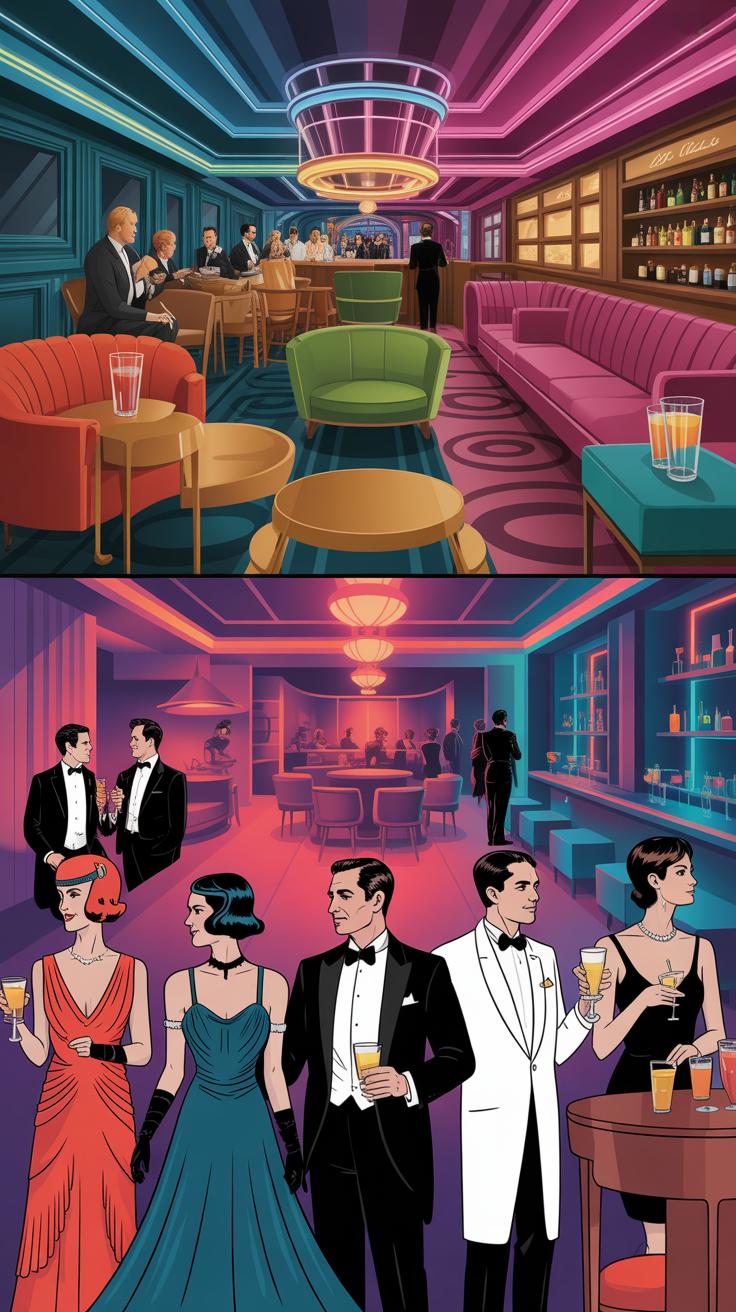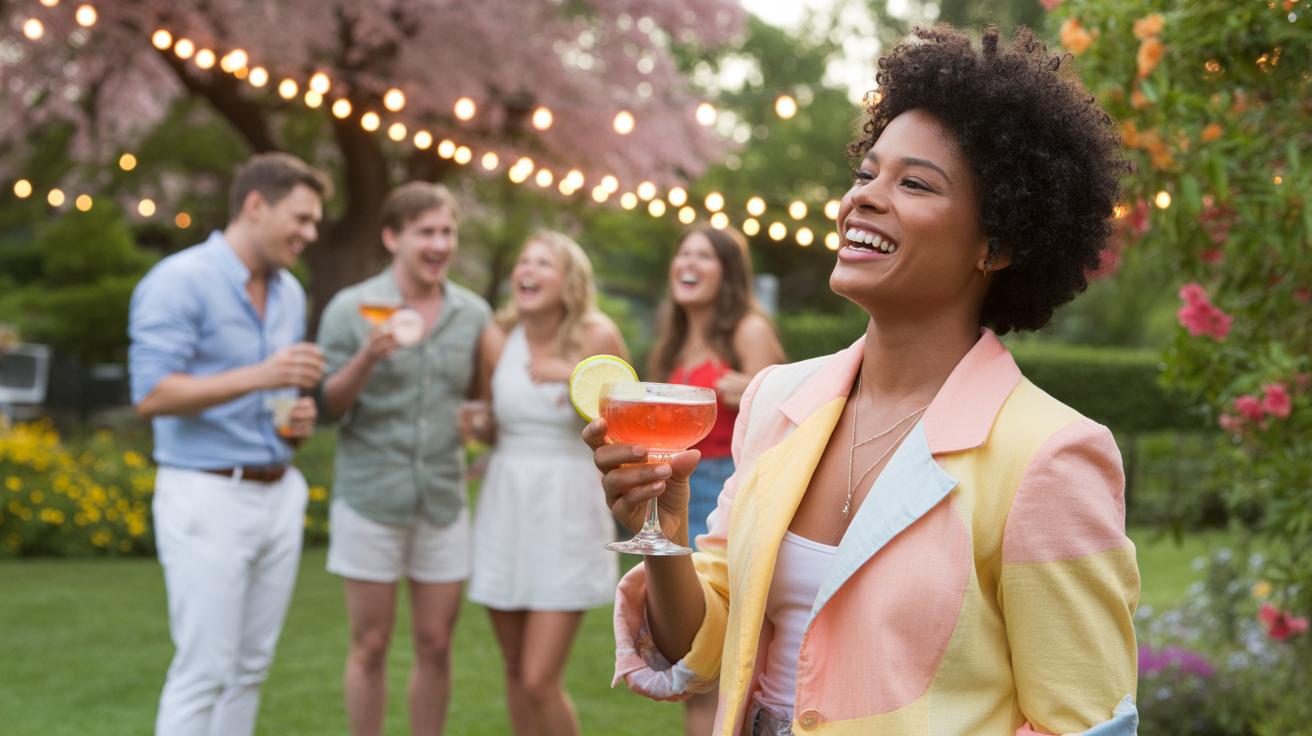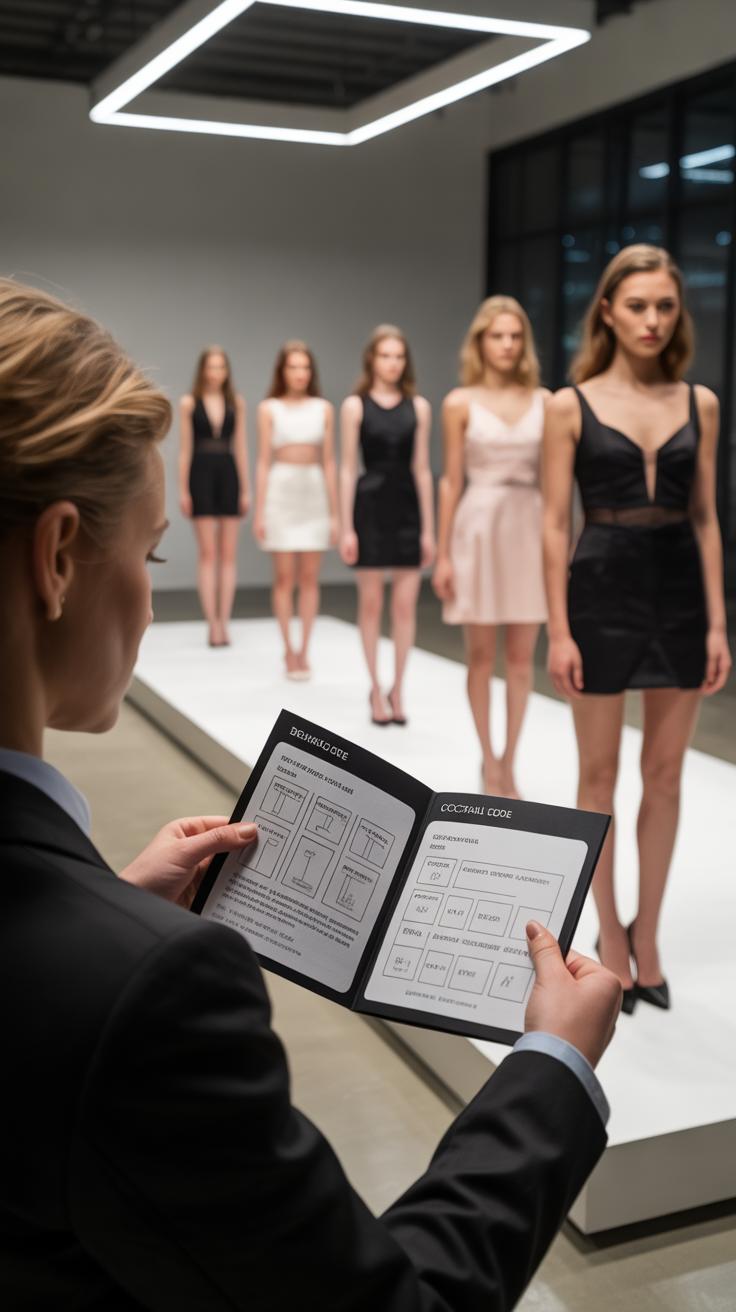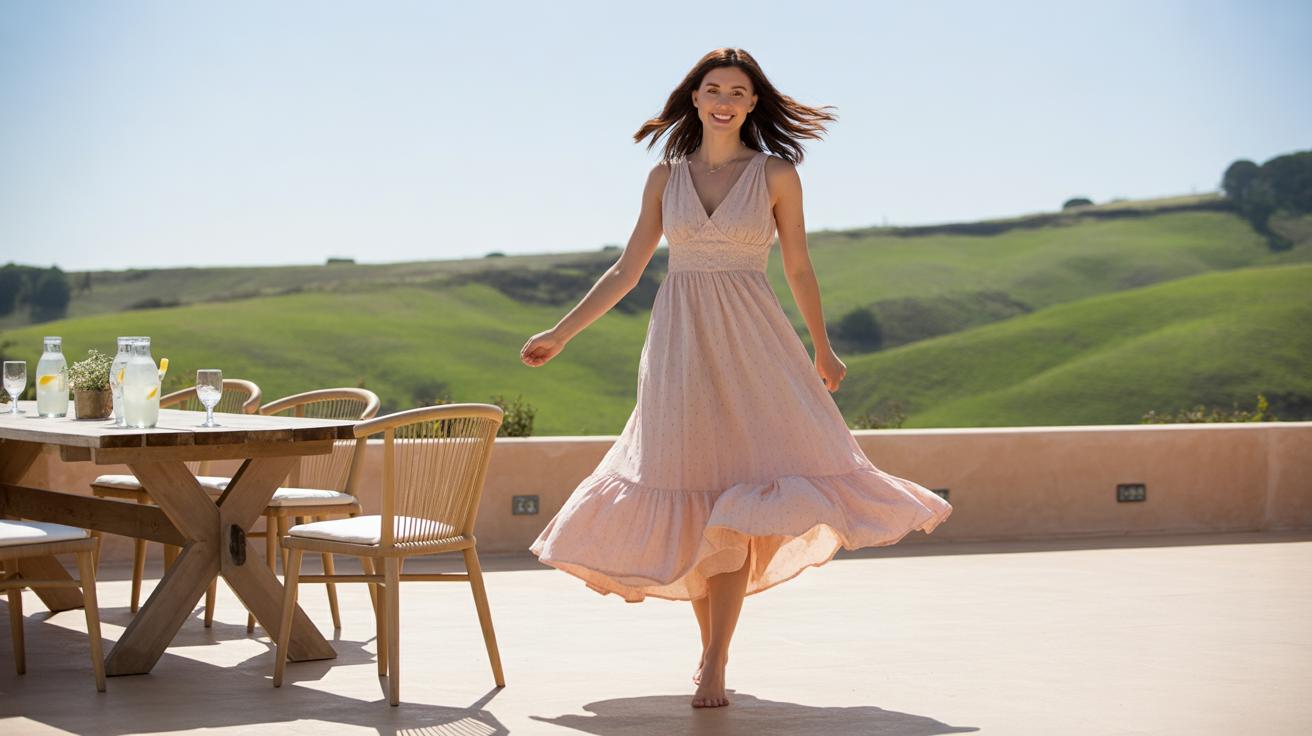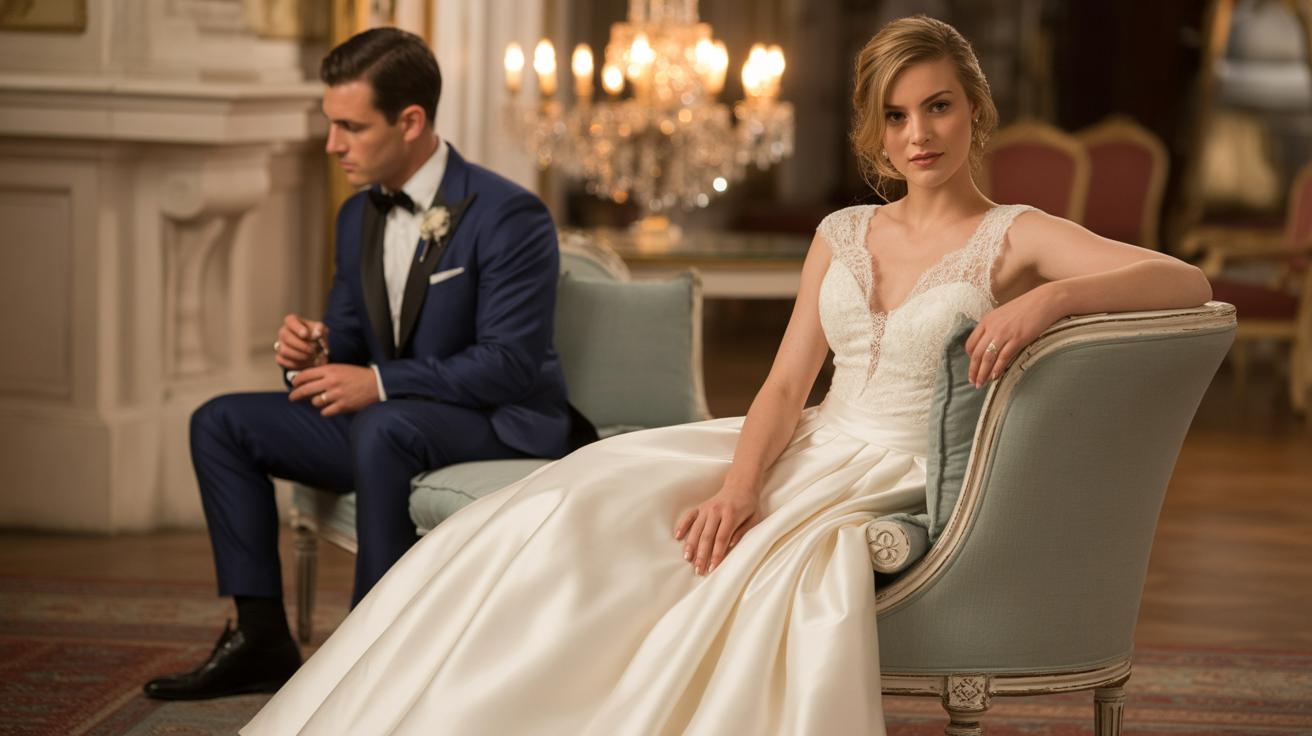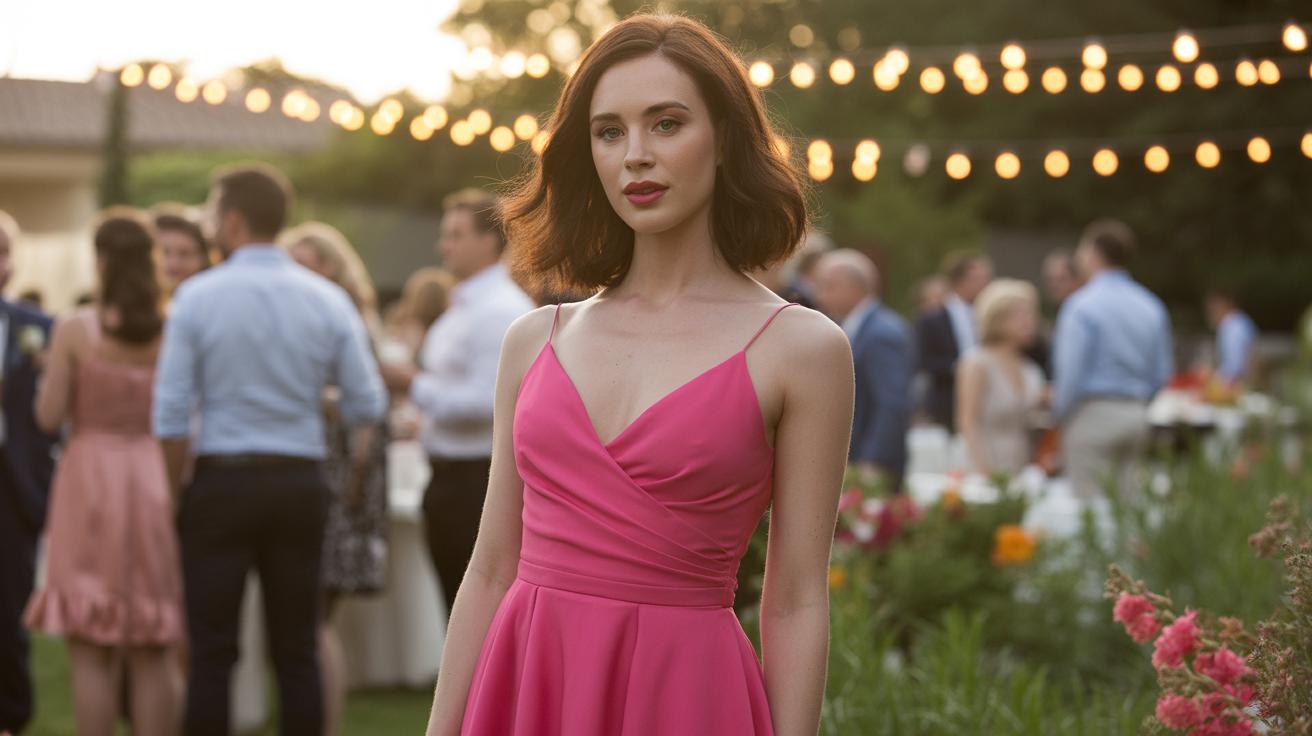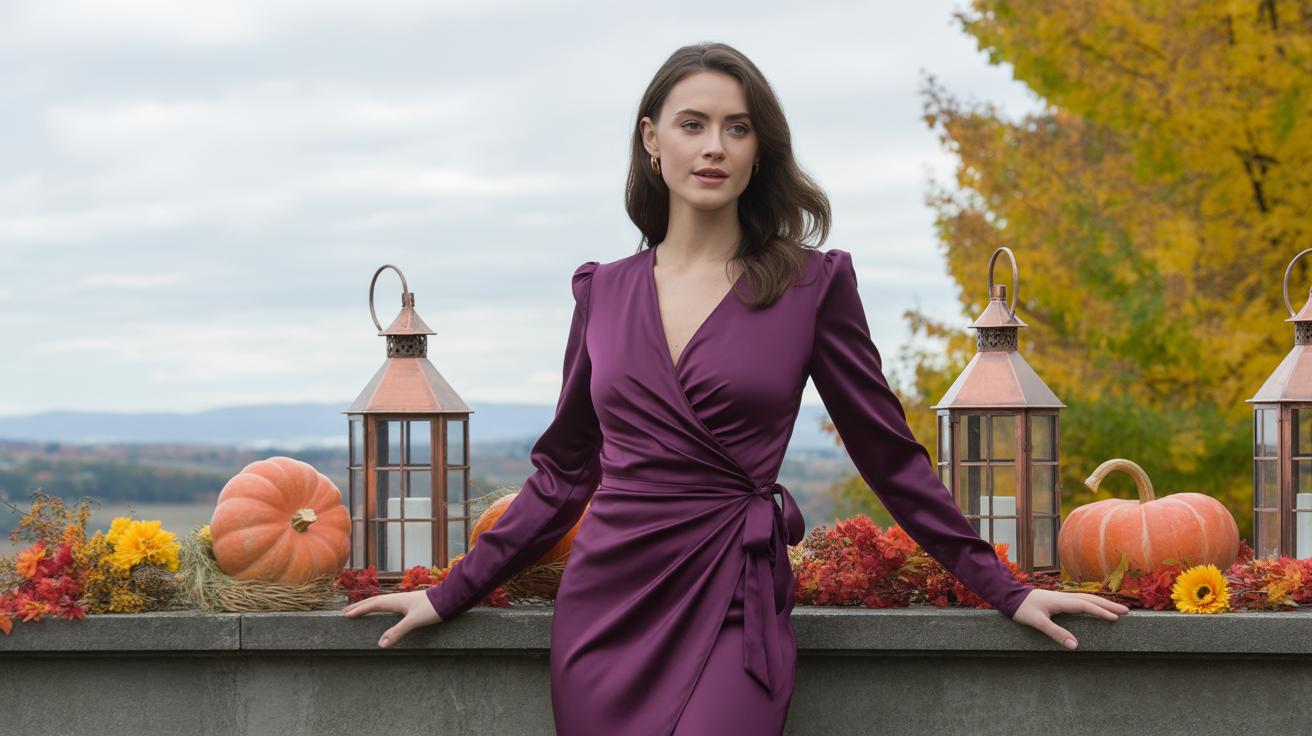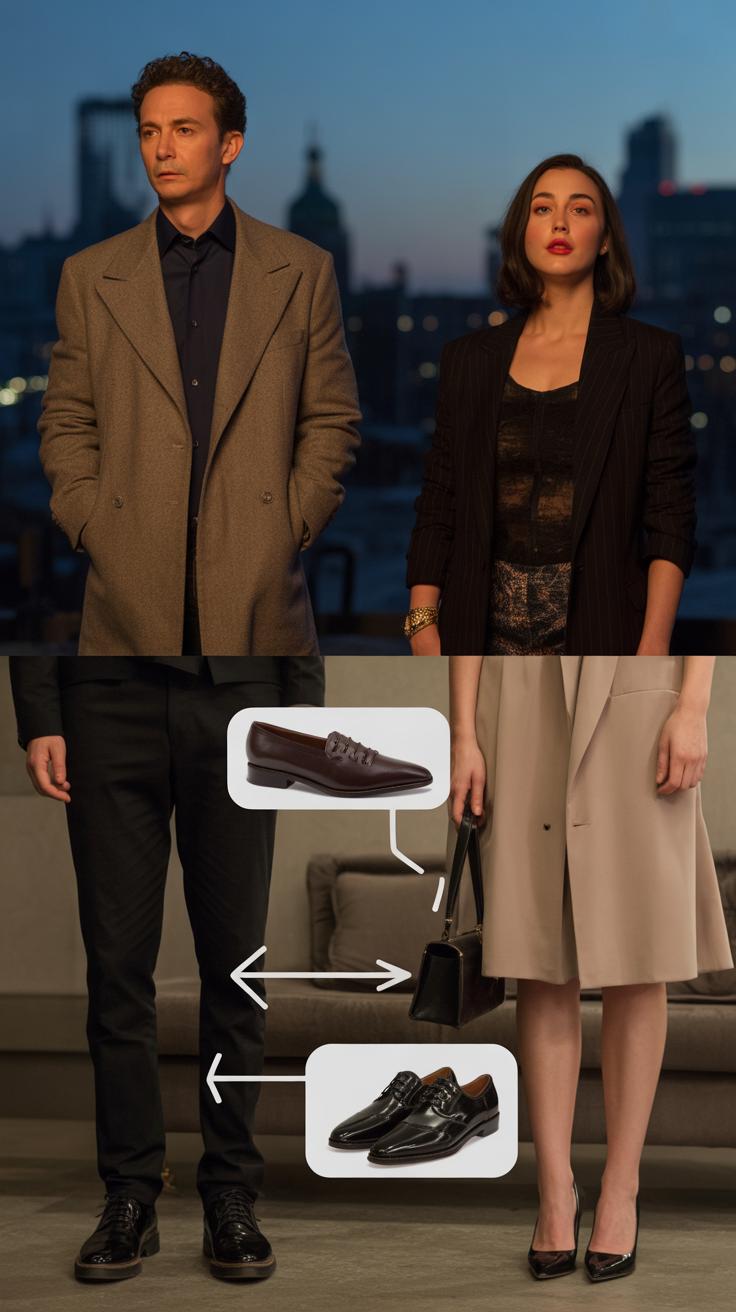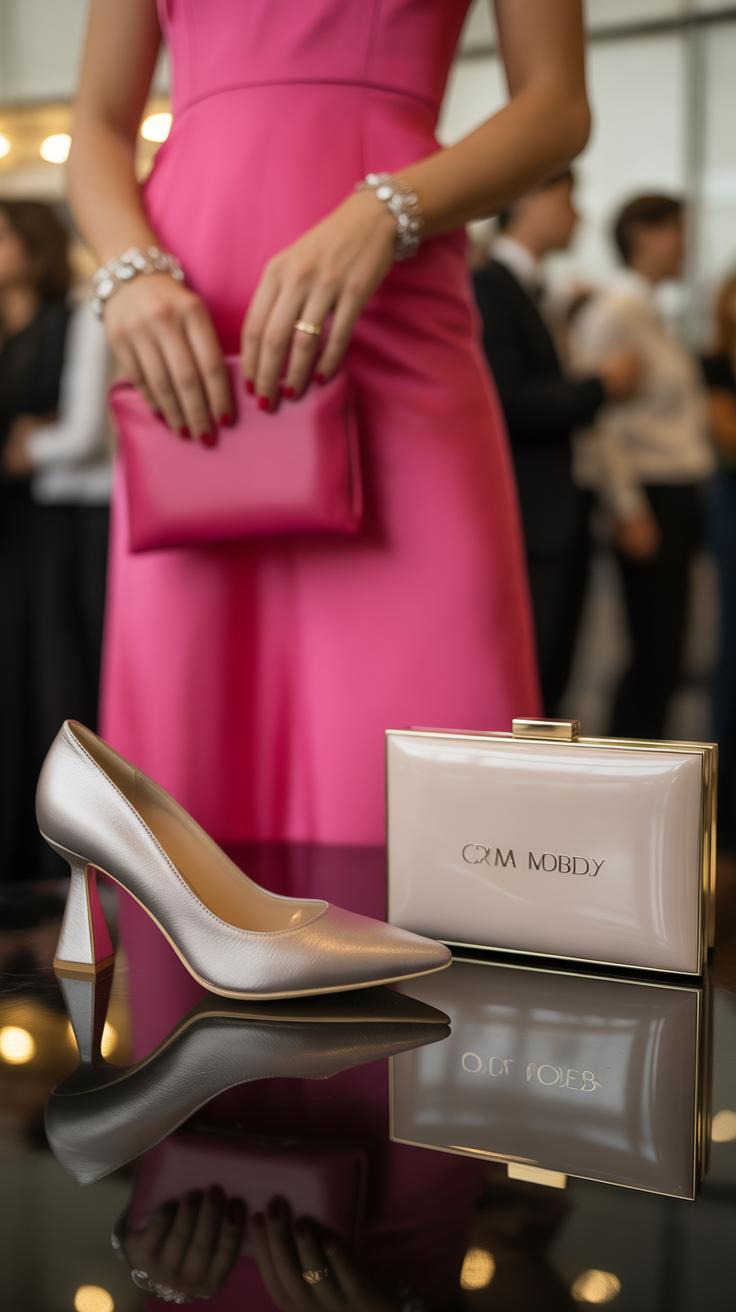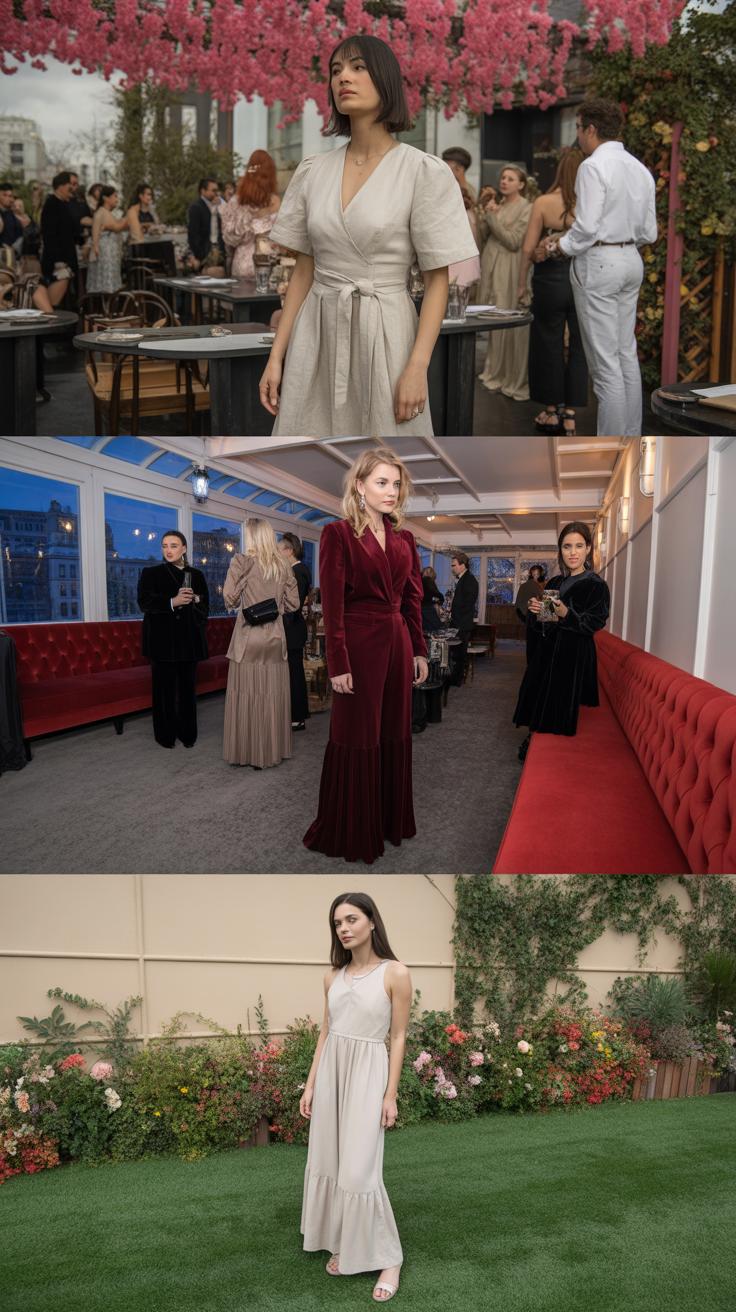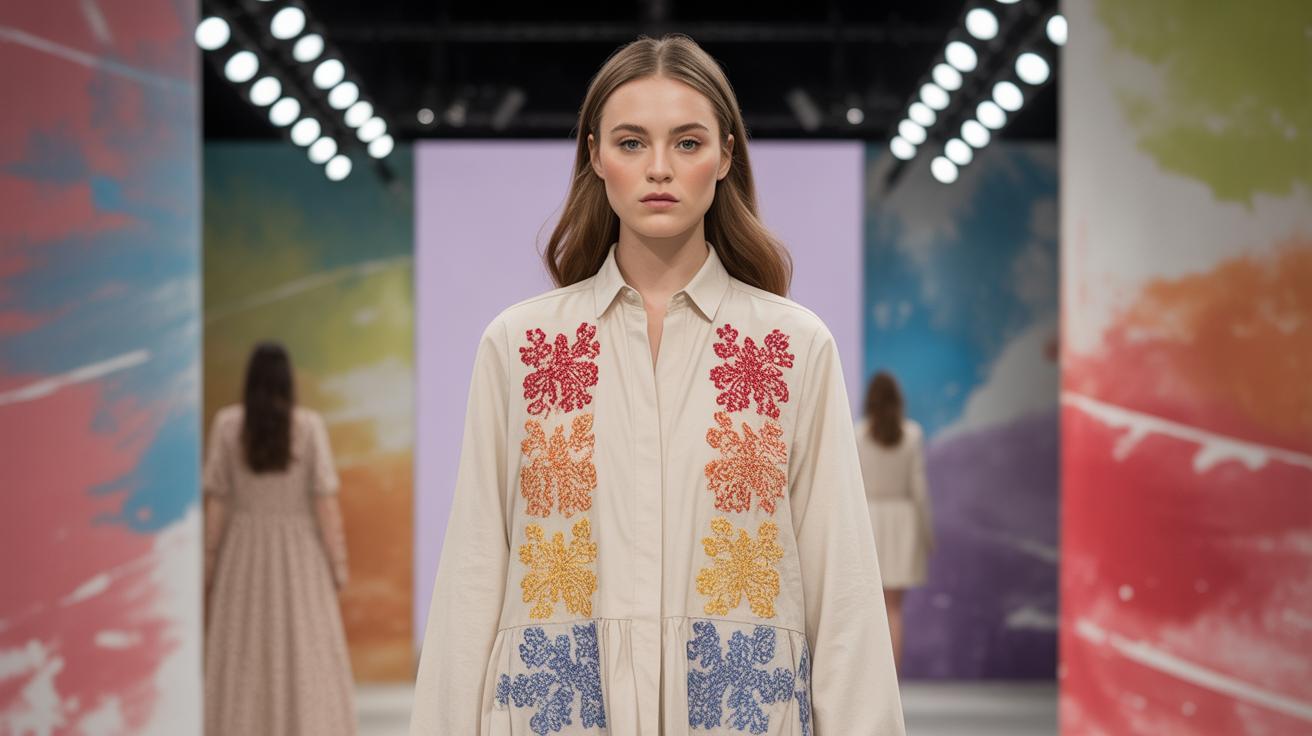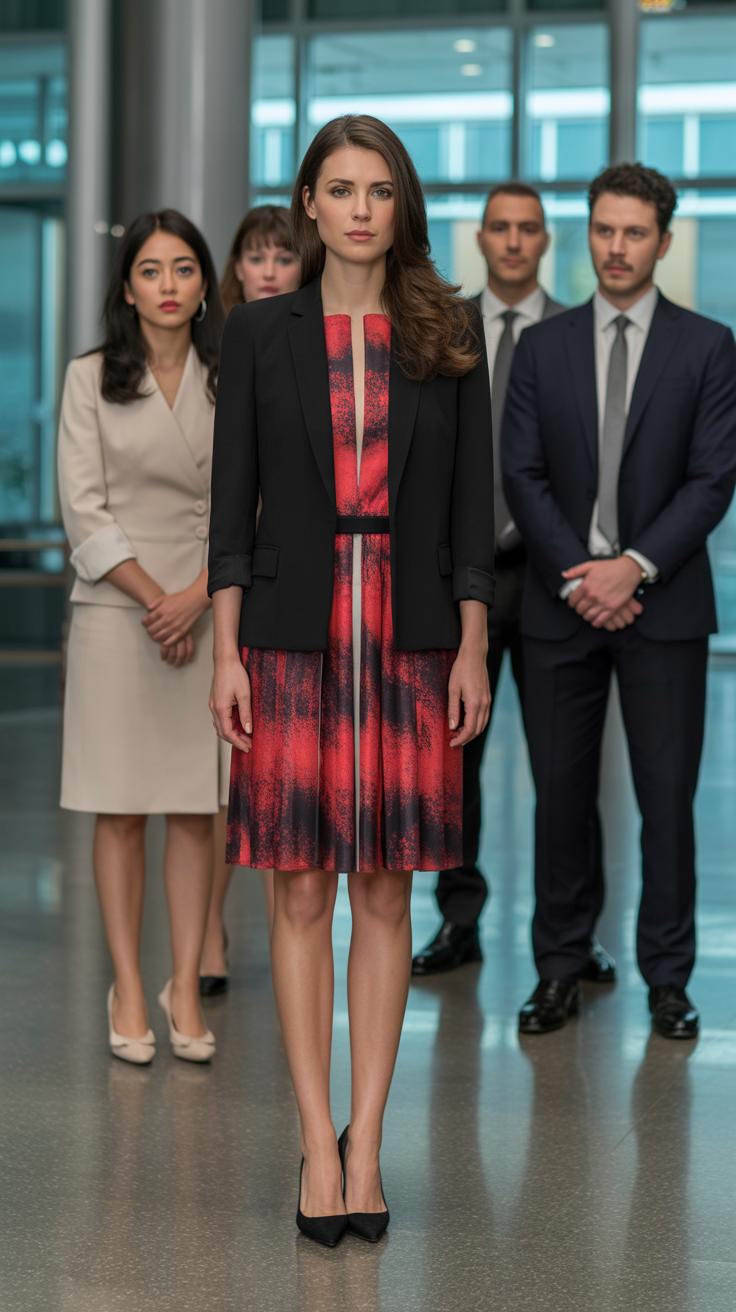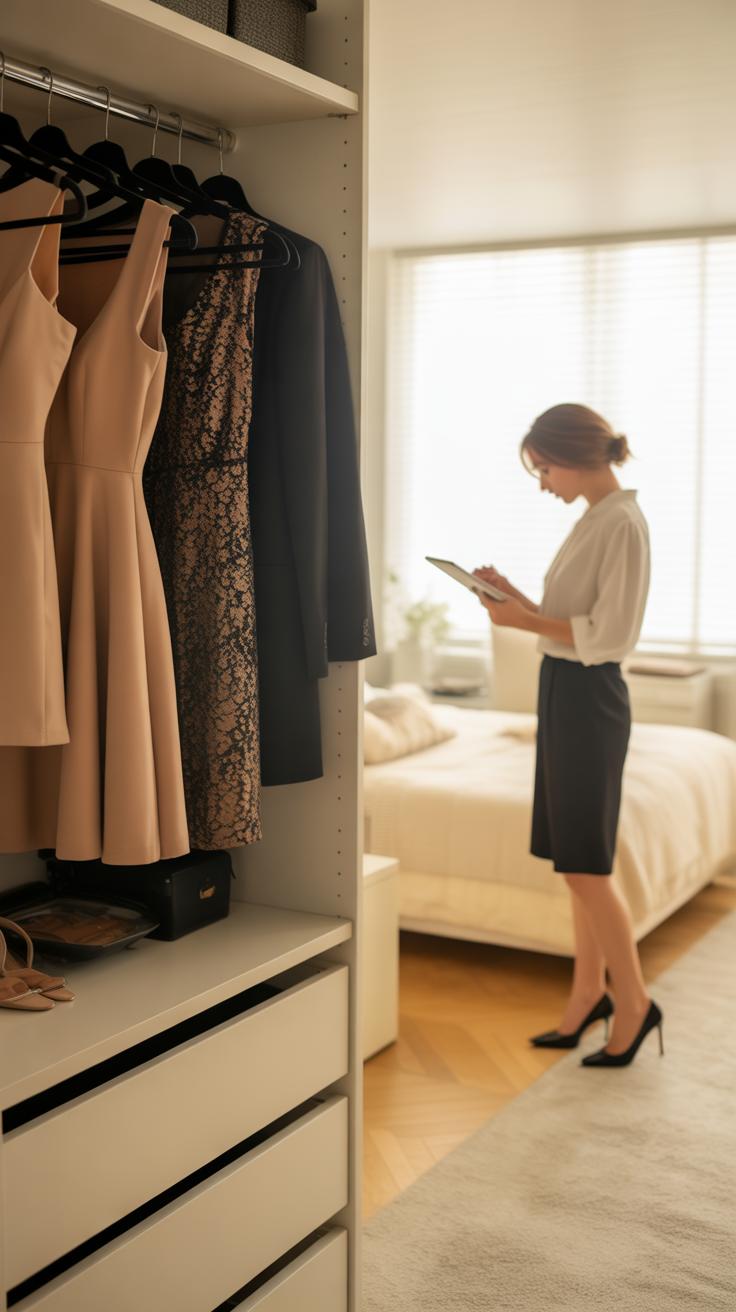Introduction
The cocktail dress code blends style and function to meet the needs of social and professional gatherings. This dress code grew popular in the early 20th century and has since become a staple for events that require semi-formal attire. For modern professionals, understanding this dress code is vital to navigate work-related social events with confidence and professionalism. It sets the tone for interaction and conveys respect for the event and attendees.
Whether attending a networking party, an office celebration, or a client meeting after hours, knowing the right outfit under the cocktail code makes a lasting impression. This guide walks you through the essentials, helping you interpret and implement the cocktail dress code within your professional life. Learn practical tips to balance elegance and professionalism, giving you a wardrobe edge in varied social situations.
Origins and Evolution of Cocktail Dress Code
The cocktail dress code began in the late 19th century, rooted in Victorian dinner dresses worn at semi-formal evening gatherings. These early styles were often elaborate and restricted to the upper class. Over time, social roles started to shift, especially with more women entering public life and attending social events outside the home. The 1920s brought major change as French and American designers introduced simpler, more versatile dresses that balanced elegance with practicality.
Events like the Great Depression influenced fashion to become more affordable and accessible, without sacrificing style. Women working in offices needed clothing that was both polished and functional. This period marked the rise of the cocktail dress as a symbol of both work and leisure. The idea of a dress that could work for evening socializing and professional occasions grew stronger leading into the 20th century.
Historical Beginnings and Social Context
The cocktail dress code evolved from the formal Victorian dinner gowns worn at exclusive assembly rooms. These dresses restricted movement and reflected rigid social structures. As the 1920s approached, social change encouraged looser styles. Women gained more independence and started attending less formal gatherings like cocktail parties. Parisian designers such as Coco Chanel introduced simpler dresses with straight cuts that allowed more freedom.
American designers picked up on this trend, adapting it for the rising middle class. The social role of women expanded, especially in urban centers, making the cocktail dress a way to navigate professional and social worlds. These dresses became less about status and more about fitting in while standing out subtly at social events.
Postwar Influence and Global Spread
After World War II, the cocktail dress grew in popularity worldwide. Designers like Christian Dior helped define the style with the “New Look,” emphasizing fitted waists and elegant skirts that suited professional and social settings alike. The rise of cinema and magazines spread these ideals broadly, influencing women across continents.
The media played a key role in making cocktail dress style accessible, showing how it worked for different occasions. Women in workplaces and the elite adopted these dresses to signal both professionalism and fashion sense. This led to the cocktail dress becoming a standard for semi-formal occasions globally, mixing tradition with modern needs for comfort and style.
Understanding Cocktail Dress Code Requirements
The cocktail dress code stands between formal and casual, offering a balance that suits many professional settings. It demands a semi-formal look that combines style with comfort. For women, cocktail attire typically includes dresses that hit just above or below the knee. Men usually wear suits that avoid full black tie but remain sharp and polished. Fabric choices influence the tone: wool blends or silk work well for suits and dresses, offering breathability and texture suitable for evening events or professional gatherings.
Colors should be refined but not dull—navy, charcoal, and jewel tones fit well. Fit plays a key role in maintaining the cocktail standard. Tailored cuts that flatter your body shape send a message of professionalism without sacrificing ease of movement. Your outfit needs to be practical enough for meetings or networking but smart enough to honor the event’s dress expectations.
Think about how your shoes and accessories complement your look without overwhelming it. In a professional cocktail setting, subtle is often better than flashy. Would you feel confident delivering your best work or making important connections in your chosen outfit? That question guides your choices effectively.
Key Elements of Cocktail Attire for Women
Women’s cocktail dresses usually fall between mid-thigh and just below the knee. This length keeps the look polished and professional while staying stylish. Styles vary from sheath and A-line to wrap dresses, but avoid anything too tight or overly casual like sundresses.
Fabric matters: choose materials such as silk, crepe, or satin that carry a subtle sheen without being too flashy. Colors like navy, burgundy, or classic black often work well. Accessories should complement without overpowering. Simple jewelry, a clutch, and elegant heels or flats finish the look. Is your dress comfortable enough for both standing and sitting, and does it project professionalism directly?
Adding a blazer can raise your look if the event leans toward business. Keep makeup and hairstyling neat and controlled—they complete your appearance in measurable ways.
Cocktail Dress Code for Men
Men’s cocktail attire centers on a well-fitted suit, typically in navy, gray, or charcoal. Avoid black tuxedos, as these suggest a more formal dress code. Opt for single-breasted suits with slim cuts. Dress shirts should be crisp and white or light-colored. A subtle pattern like thin stripes can add personality but keep it professional.
Ties are common, but you can skip them if the setting is more relaxed. When worn, choose classic silk ties in solid colors or simple prints. Shoes should be polished leather Oxfords or loafers in brown or black. Avoid casual shoes and sneakers entirely.
Think about the fit, especially around the shoulders and waist, for clean lines and comfort. Would your outfit help you appear confident at networking events or client meetings? This consideration balances style with function in your cocktail wardrobe.
Why Cocktail Dress Code Matters in Professional Settings
Following the cocktail dress code helps you make a strong impression in professional settings. Your clothing signals how seriously you take the event and your role. When you dress appropriately, people are more likely to view you as competent and reliable.
How you dress also shapes communication. You appear more approachable and confident when your outfit fits the event’s expectations. This confidence opens doors to new conversations and career opportunities.
Wearing the right cocktail attire shows respect for your hosts and peers. At business social events, this respect builds trust and helps you stand out for the right reasons. When you invest in your appearance, you send a clear message that you take professionalism seriously.
Have you noticed how people treat those who dress well compared to those who don’t? That difference affects your career growth and how you connect with others in your field.
Impression and Professional Image
Your first impression begins the moment you enter a room. The cocktail dress code sets a clear standard that you can meet or exceed. Choosing garments that fit well and match the event helps you appear polished and prepared.
When you dress correctly, you avoid distractions caused by inappropriate or mismatched clothing. People focus on your ideas rather than what you wear. This focus improves how others see your value and professionalism.
What does your current wardrobe say about you? Taking time to dress in line with the cocktail code communicates your awareness of social norms and your place within a professional community.
Networking and Social Interactions
Fitting in with the cocktail dress code smooths social interactions at professional events. Wearing suitable attire lets others see you as part of the group, making it easier to approach and connect.
When everyone follows the same standard, you avoid awkwardness or distractions that can hamper networking. You project confidence without seeming out of place, encouraging others to engage with you.
Have you ever noticed how a well-chosen outfit helps break the ice? Dressing for the occasion improves your chances of building meaningful professional relationships that benefit your career.
Common Mistakes to Avoid When Dressing Cocktail
You might think finding the right cocktail outfit is easy, but many professionals struggle with common mistakes that hurt their confidence and image. One frequent error is dressing either too casually or too formally. Wearing jeans or simple t-shirts to cocktail events sends the wrong message. On the other hand, showing up in a full tuxedo or ball gown can make you stick out in an awkward way.
Ignoring details like the type of event or its location also leads to poor choices. For example, a networking event at a high-end hotel calls for sharper attire than a casual after-work meet-up. Failing to adapt to these nuances shows a lack of awareness.
Comfort often gets overlooked, but you need to feel at ease in your outfit. Uncomfortable shoes or tight clothes distract you and affect how you interact. Think about your entire evening and pick options that support your confidence and presence.
Balancing Formal and Casual
Striking the right balance between formal and casual is essential. Too casual means sneakers or polo shirts that don’t match the semi-formal spirit. Too formal means suits with tails or overly embellished dresses that seem out of place. You want to fit in comfortably with other professionals while maintaining a polished look.
Ask yourself if your outfit fits the event’s dress tone. A sleek blazer with tailored pants or a cocktail dress paired with smart heels usually works well. Could less formal clothing work with a bit of refinement? Could slightly dressier items tone down a formal look? Finding that middle ground helps you show professionalism without appearing stiff or underdressed.
Ignoring Context and Event Details
Events differ—networking mixers, client receptions, or after-hours team gatherings each have unique expectations. Not considering the setting can lead to inappropriate dressing. Outdoors events may require lighter fabrics and practical shoes. Upscale venues ask for more refined outfits.
Think about the time, season, and who will attend. Are you meeting senior leaders or colleagues? Will you mingle inside or on a patio? Matching your outfit to the event’s context shows respect and awareness. It also prepares you to engage easily with others. How can you learn event specifics ahead of time? Asking a host or consulting the invitation helps avoid guesswork and makes your choice clear.
Choosing the Right Accessories and Footwear
Your choice of accessories and footwear must complete your cocktail outfit without stealing the show. Selecting the right pieces requires balance, ensuring each item supports your overall look. When you pick jewelry, watches, and belts, focus on items that add subtle polish rather than overwhelming your attire. For example, a sleek watch or small hoop earrings work well for most professional settings, while a bright statement necklace might draw too much attention.
Comfort plays a vital role during cocktail events, especially as these often involve standing and moving around. Shoes that look good but cause discomfort can distract you and affect your confidence. Think about shoes with cushioned soles and stable heels. Loafers or block heels often fit both style and comfort needs better than stilettos or flats, which might wear down your energy before the night ends.
Selecting Accessories That Enhance
Minimalist accessories generally match the cocktail dress code better than bold or flashy pieces. A thin bracelet or a delicate pendant adds just the right tone without competing with your outfit. However, one statement piece such as a bold watch or subtle cufflinks can work if everything else stays low-key. Ask yourself: Does this piece highlight my outfit or distract from it? Choose items that complement your colors, materials, and the event’s formality.
Footwear Choices for Comfort and Style
Shoe selection must factor in both style and comfort for the demands of cocktail events. Closed-toe pumps with a moderate heel often fit the professional cocktail setting without causing strain. Consider padded insoles or arch support if you expect long periods of standing. Stylish loafers and low block heels also provide balance between elegance and ease. Always test your shoes before an event to prevent discomfort from cutting your evening short.
Adapting Cocktail Dress for Different Seasons and Venues
Dressing for Warm and Cold Weather
Choosing the right fabrics can make cocktail attire comfortable no matter the season. In warmer months, select breathable materials like linen, cotton blends, or lightweight silk. These fabrics allow airflow and keep you cool while maintaining a polished look. For example, a lightweight sheath dress or a slim cotton blazer works well for summer events.
When temperatures drop, focus on layering. A tailored wool blazer or a cashmere wrap adds warmth without sacrificing style. You can wear a long-sleeve dress or incorporate thicker fabrics like velvet or heavier silk. Don’t forget that well-fitted outerwear, such as a trench coat or a structured overcoat, helps complete your look and protects you from the cold while maintaining professionalism.
Have you considered how your choice of shoes might change with the weather? Closed-toe options suit winter, while sandals or lighter footwear fit warm seasons better.
Venue-Specific Adjustments
The location of your event should influence your cocktail outfit. For outdoor venues like garden parties or rooftop gatherings, prioritize comfort and flexibility. Opt for fabrics that won’t wrinkle easily and shoes with stable heels, since grass or cobblestones can be tricky to walk on. Adding a stylish shawl or lightweight jacket will also prepare you for temperature shifts.
Indoor venues often call for a more polished appearance. Satin or silk fabrics work well here, giving your outfit a refined edge without extra layering. A classic blazer or fitted jacket can enhance your look while keeping it professional. Consider how lighting and space might highlight details like texture and color, and choose your outfit accordingly.
Have you noticed the way a venue’s atmosphere affects your confidence? Matching your attire to the setting helps you feel ready to engage and network effortlessly.
Incorporating Personal Style While Keeping Professionalism
Finding ways to express your own style within the cocktail dress code helps you feel confident and authentic at professional events. You do not have to sacrifice professionalism to add your personal touch.
Start by choosing subtle details that reflect your personality. Consider incorporating a unique color or slight pattern that complements the setting. These small choices let you stand out without drawing too much attention.
Think about how accessories can offer a personal flair while maintaining a polished look. Focus on pieces that are elegant but not distracting. Balancing individuality with the event’s tone shows you understand professionalism.
What colors, patterns, or accessories make you feel most yourself? Can you find versions of these that fit the standards expected in your professional circle? Answering these questions will guide you to create cocktail outfits that fit you uniquely and appropriately.
Adding Personality via Color and Patterns
Color can transform a classic cocktail outfit while keeping it suitable for professional events. Soft jewel tones, like emerald or sapphire, can add richness without overwhelming a look. Neutral colors with a pop of deep red or navy bring interest while remaining professional.
Patterns work best when they are subtle and balanced. Consider small polka dots, pinstripes, or delicate geometric prints. Wearing patterned blouses under solid blazers or skirts helps add variety without losing formality.
You may wonder how much pattern is too much. The key is moderation. A single patterned piece can be a focal point without overpowering your entire outfit. Keep other pieces simple to avoid clashing.
Personal Touches with Accessories
Accessories offer a great chance to reflect your style in a controlled way. A well-chosen watch or tie with a unique but understated design can speak volumes about your personality.
Try cufflinks, scarves, or subtle jewelry to highlight your taste. Avoid overly flashy or large accessories that might distract during professional interactions.
Consider the setting and adjust your accessories accordingly. For example, a silk pocket square adds flair to a suit, while a fine bracelet can complete a cocktail dress without overwhelming it.
If you want to showcase creativity, ask yourself whether each accessory supports your overall polished image. When you select carefully, accessories become a natural extension of your professionalism and individuality.
Preparing Your Wardrobe and Making Smart Purchases
Building a Capsule Cocktail Wardrobe
Start by choosing core pieces that suit different types of cocktail events. A classic little black dress or a well-fitted navy suit can form the foundation. Include neutral colors like black, gray, and beige to help mixing and matching. A tailored blazer, a simple sheath dress, and polished leather shoes create many outfit options. Select items with clean lines and minimal embellishments for flexibility.
Consider versatile fabrics that can work in various seasons. For instance, wool blends or mid-weight silks balance comfort with style. When assembling your collection, add one or two statement pieces, such as a patterned blouse or a bold jacket, to switch up the look without complicating your wardrobe. This focused approach saves time and reduces excess spending.
Tips for Smart and Sustainable Shopping
Choose quality fabrics that hold their shape and color longer. Check construction details like sturdy stitching and well-set buttons. When you select durable pieces, they maintain appearance through repeated wear. Avoid fast fashion items that quickly lose fit or fabric integrity.
Care for your clothes by following washing instructions carefully and storing them properly. Dry cleaning suits or dresses only when necessary extends their life. Can you identify which items in your current wardrobe last longest? Prioritize similar quality in future purchases.
Look for sales on timeless styles instead of chasing trends. Thrift stores and consignment shops hide gems at lower prices. Smart buying and attentive care make your cocktail wardrobe sustainable and ready for varied professional occasions.
Conclusions
Mastering the cocktail dress code is a practical skill that benefits every modern professional. It allows you to present yourself aptly, blending tradition with today’s workplace expectations. Your attire will speak volumes when words fall short, so choose pieces that communicate respect and sophistication without sacrificing comfort. Remember, a well-chosen cocktail outfit supports your professional identity.
Ultimately, the cocktail dress code is flexible but shaped by clear conventions that professionals respect. Each event might have nuances, so stay observant and adaptable. Your confidence comes from preparation, including your clothing choices. Equipped with guidance from this article, you can approach cocktail attire decisions with clarity and style, making your presence a positive and memorable part of any professional gathering.



